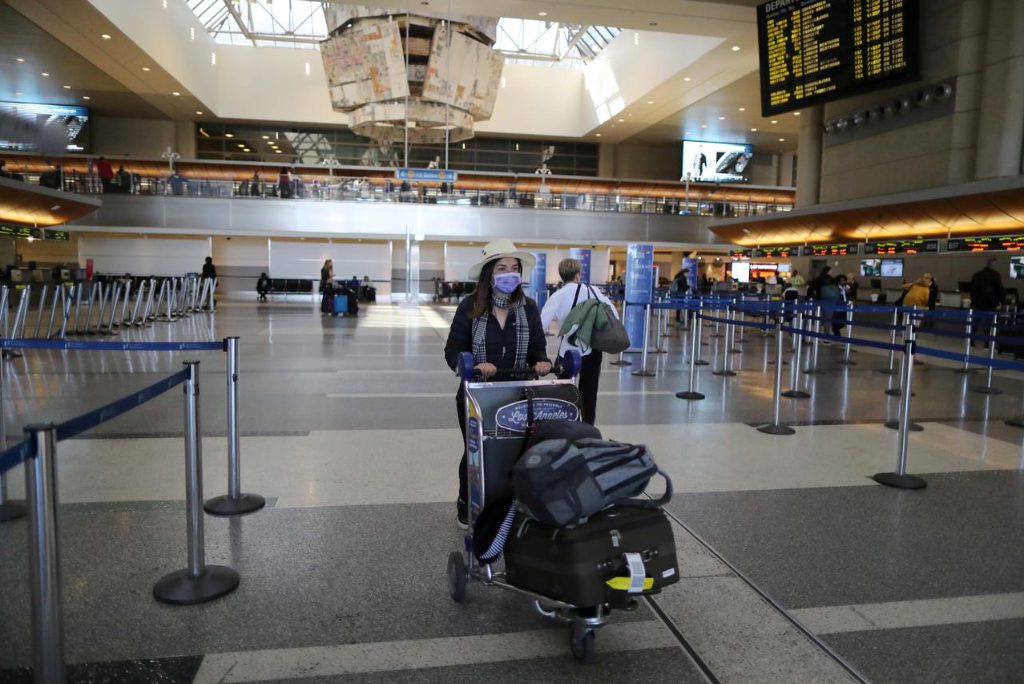Skift Take
Tuns out it is easier to ban travel than it is to permit it again.
The U.S. government largely shut down international travel to the United States in March with a series of rapid-fire moves, but restarting it will likely be a longer, more piecemeal process that could be complicated by rising tensions with China.
Even as President Donald Trump pushes for U.S states to begin reopening their economies, U.S. borders remain shut to travelers from China and Europe.
Any decision on easing travel restrictions will depend in large part on what safety protocols all countries put in place to limit the spread of the novel coronavirus and whether those countries in turn grant entry to Americans, U.S. officials told Reuters.
White House economic adviser Larry Kudlow said last week that Trump and U.S. health officials were examining the issue of international travel but did not provide further details.
Trump implemented a temporary ban on most travelers coming from China, the source of the novel coronavirus outbreak, in January and put similar restrictions on travelers from Europe in March.
The United States also halted nonessential travel across its shared borders with Canada and Mexico in March and suspended routine visa services in most U.S. consulates abroad.
Some U.S. airlines would like to resume limited service to China – a major market for them – in June, but the possibility of the Trump administration lifting travel restrictions will be complicated by China’s own restrictions on foreign carriers, according to a senior U.S. official who requested anonymity to discuss the matter.
China limits foreign airlines to one flight into the country per week, and planes are only allowed to fly with 75% of passenger capacity.
Domestic politics may also influence which countries’ travelers are first granted renewed access to the United States. While a nationwide regime of screening, testing and quarantine has vastly reduced the number of confirmed coronavirus cases in China, Trump and top aides have questioned the accuracy of information from China, angering Beijing.
China reported a far lower death toll from the virus than the United States and other hard-hit countries. It has denied allegations that it has suppressed important data.
A senior Department of Homeland Security official said DHS questions the accuracy of coronavirus-related information coming from Beijing but stressed that the United States could use its own intelligence to make a decision about travel restrictions.
The official also said U.S. business ties with China would factor in to any decision about whether to lift the restrictions.
RECIPROCITY
The discussions within the Trump administration on how and when to reopen the United States to international travel have not yet crystallized into a plan, U.S. officials said, as the situation is still fluid and there are still fears of a resurgence of the virus in countries now reporting lower caseloads.
But Washington is clear on one thing – people from other countries should not be allowed into the United States if Americans still are not allowed to travel to those nations, the senior U.S. official said.
However, with the virus still rampant in the United States, which has the highest number of cases in the world , some countries may be hesitant to accept U.S. travelers any time soon.
The European Union on Wednesday pushed to reopen internal borders and restart travel, but recommended Europe’s external borders remain closed for most travel at least until mid-June.
While there has been some talk in the administration of reopening borders to travelers from Europe first, officials are mindful that many of the initial infections in the United States originated in Italy.
“I think coordination between governments is going to be key,” Virginia Messina, managing director with the World Travel and Tourism Council, said. “You are going to need those bilateral agreements.”
When the United States restricted travel from Europe it was effectively a blanket ban. Unwinding that ban and replacing it with agreements with individual European countries could be a much longer process.
Lifting the restrictions will also require a series of choreographed steps by different U.S. government agencies.
The U.S. Centers for Disease Control and Prevention and the State Department will need to dial back travel advisories calling for Americans to avoid all international travel before the United States can allow in travelers from restricted countries, according to Lora Ries, a senior research fellow with the Heritage Foundation and former Trump administration homeland security official.
The blanket advisory is likely to be replaced by more country-specific warnings, depending on the state of the pandemic in the relevant countries or region.
Restoring the flow of travelers into the United States could help boost the economy in the aftermath of the coronavirus outbreak. The Washington-based U.S. Travel Association estimated that spending by international travelers supported 1.2 million U.S. jobs and $33.6 billion in wages in 2019, economic activity that has been wiped out by the pandemic.
But the priority is to restore confidence in U.S. domestic air travel before turning attention to international travel, said Tori Emerson Barnes, an executive vice president with the U.S. Travel Association, a pro-industry nonprofit organization.
“I think that it will be a slow opening, unfortunately,” she said.
(Reporting by Ted Hesson, Steve Holland and David Shepardson in Washington Editing by Ross Colvin and Matthew Lewis)
Copyright (2020) Thomson Reuters. Click for restrictions
This article was written by Ted Hesson from Reuters and was legally licensed through the NewsCred publisher network. Please direct all licensing questions to [email protected].
![]()
The Daily Newsletter
Our daily coverage of the global travel industry. Written by editors and analysts from across Skift’s brands.
Have a confidential tip for Skift? Get in touch
Tags: coronavirus, international tourism, united states, us travel, US Travel Association, white house
Photo credit: A woman walks through an international terminal at Los Angeles International Airport on March 11, 2020. Lucy Nicholson / Reuters
